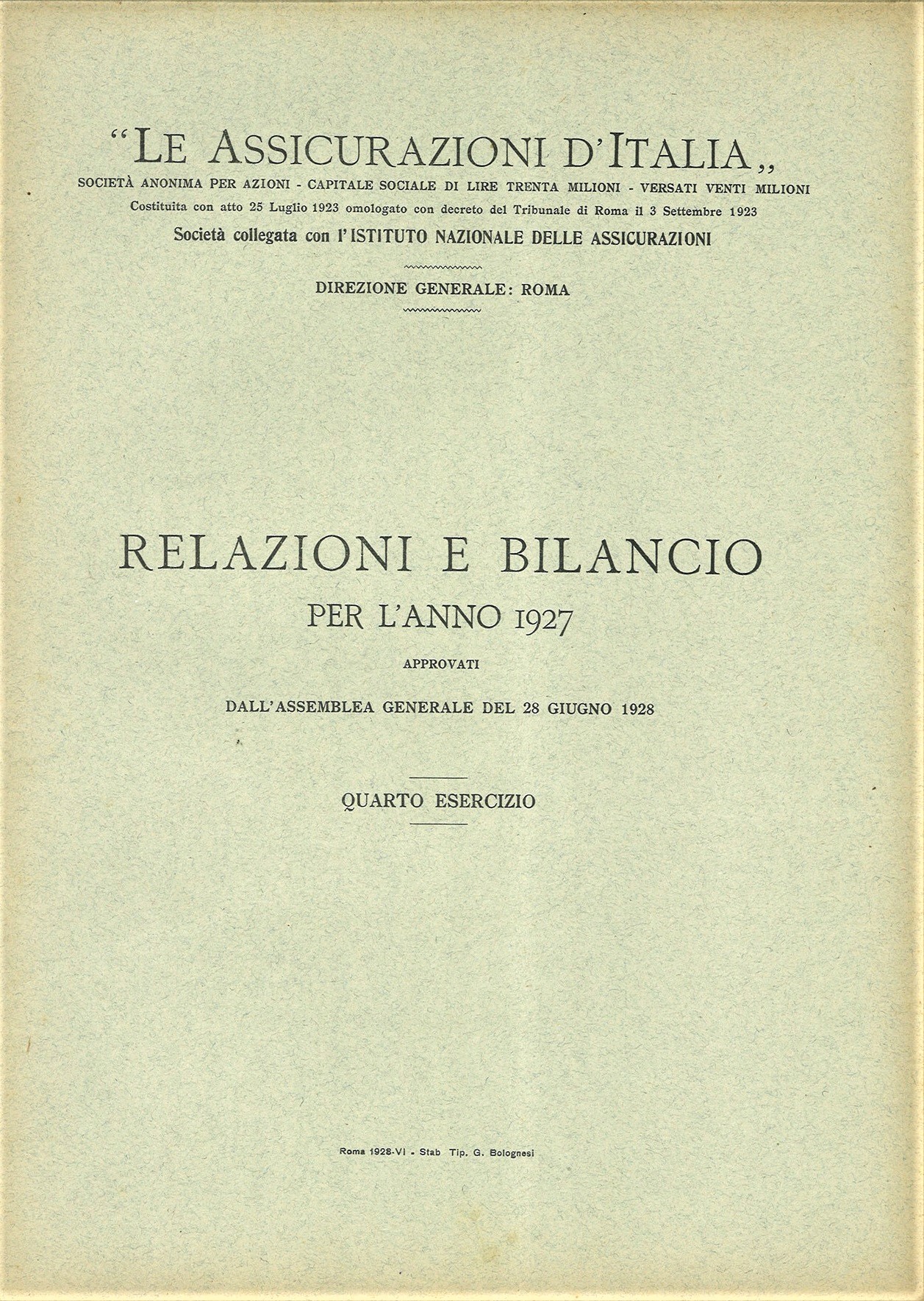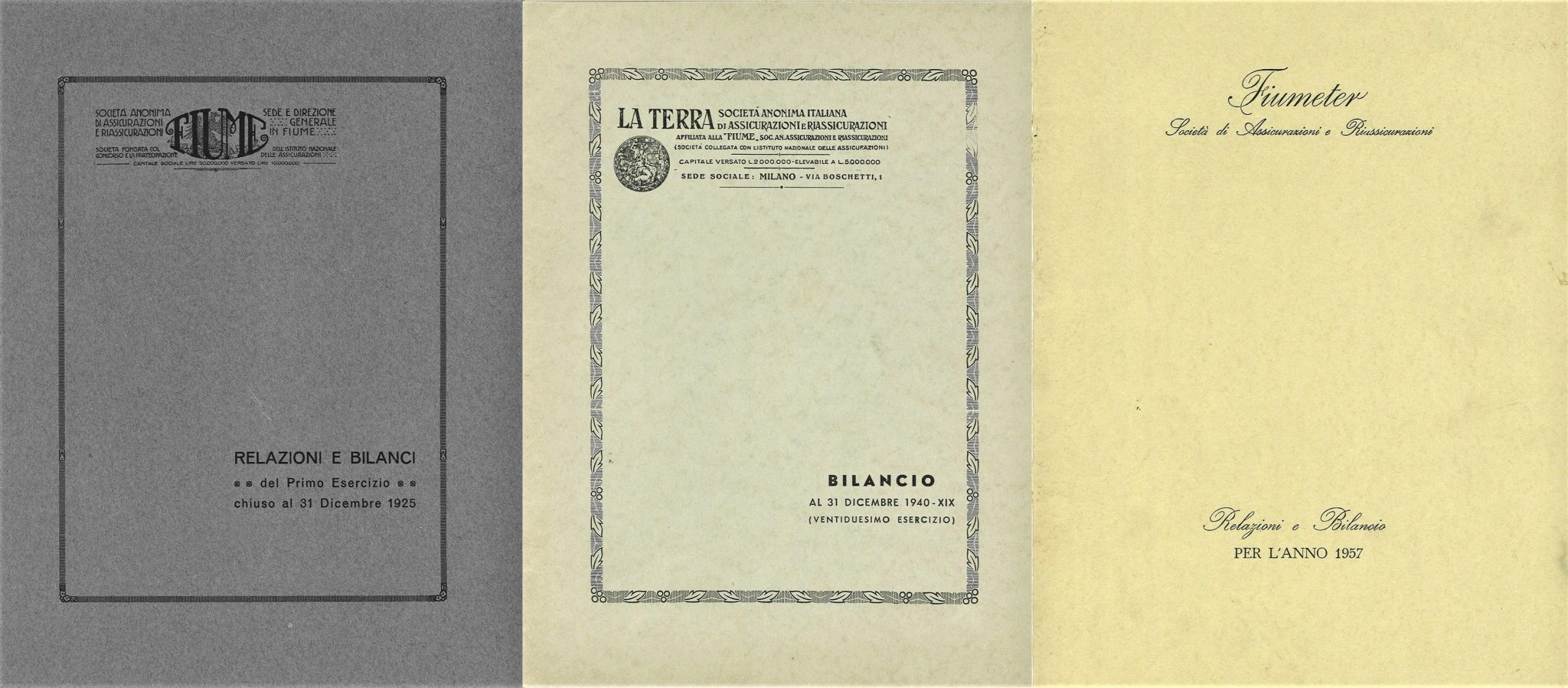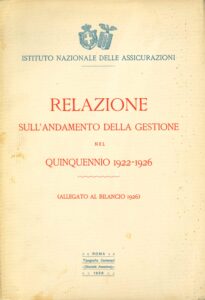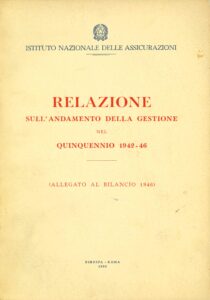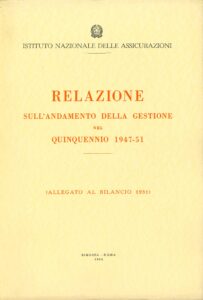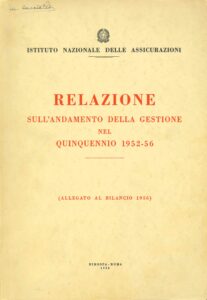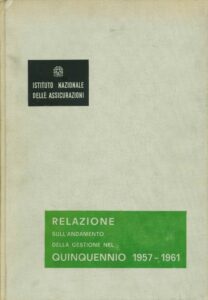INA Group Financial Statements (1913-1963)
31 July 2019
The historical financial statements of the INA – Istituto Nazionale delle Assicurazioni [National Insurance Institute], as well as those of its subsidiaries, Le Assicurazioni d’Italia, Praevidentia and Fiume (as well as its affiliate, La Terra, the two of which merged to become Fiumeter after the war) provide detailed facts and figures regarding the economic activity of the day, with data regarding all branches of insurance as well as the state-owned insurance institution and its affiliates. Beyond that, however, they also serve as invaluable tools of historical research, both for a specific investigation of the rich and varied business history of the Group and its different corporate interests, but also for a general study of the rise and development of insurance in Italy.
The financial figures provided in the reports produced by the board of directors and the commissioners are always grounded in the financial circumstances of the period, making them a perennially valuable font of socio-economic data. The hard copies of the financial statements also provide useful information on officials and social entities, investments in national and foreign bonds, activities within public authorities, quotas of equities, including those in insurance firms, and last but not least, real estate assets. The significance of its assets and the ability to trace its ongoing growth via the buildings and land purchased over the years make this last one particularly fascinating in the case of the INA. In the early 1960s, these real estate assets also served a marketing purpose in the financial statements, filling the pages with images of new complexes and buildings purchased, with photos taken throughout the various phases of construction and completion of the latest buildings.
Compiled pursuant to Art. 14 of Legislative Decree No. 966 of 29 April 1923, passed into law as No. 473 on 17 April 1925 (the law abolishing insurance monopolies and putting the INA in competition with private companies), the technical-statistical reports on management trends, for five-year periods, include detailed analysis of results followed by an examination of the state of its assets. The subject of a particularly detailed study here includes observed mortality rates of policyholders, papers on return on assets, purchasing costs and portfolio management, as well as the technical assumptions underlying the calculations of premiums and reserves, as necessitated by Art. 22 of the INA’s organisational statute. Full of information in text, graphics and charts, the volumes of five-year reports round out and integrate the information that appears in the budgets of individual years and place them in a broader context.

